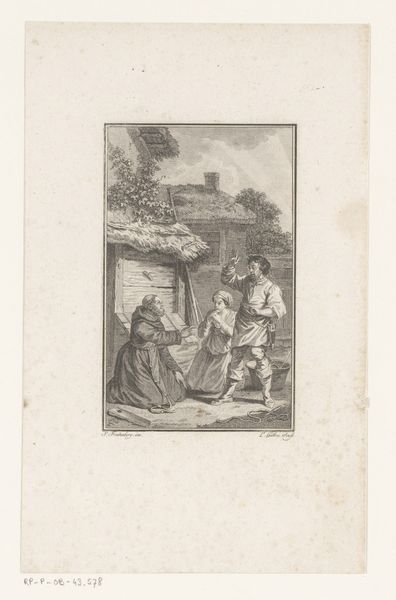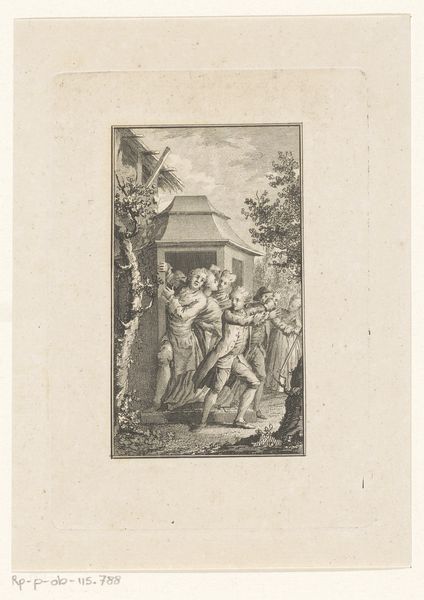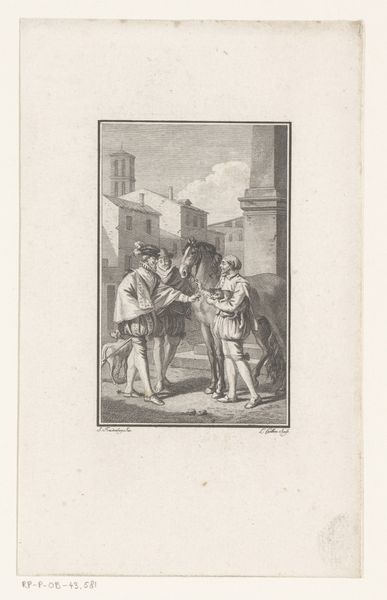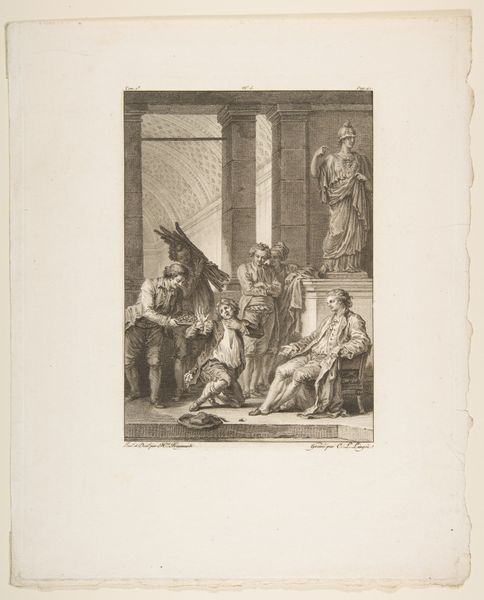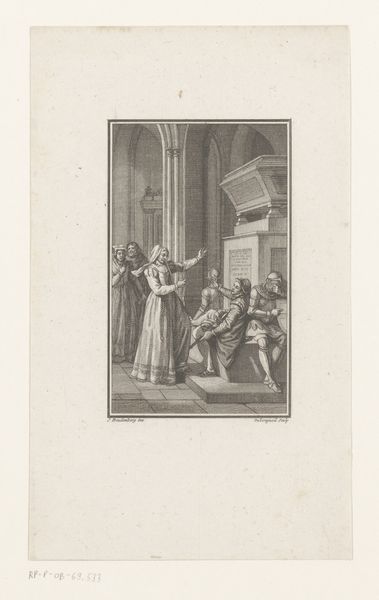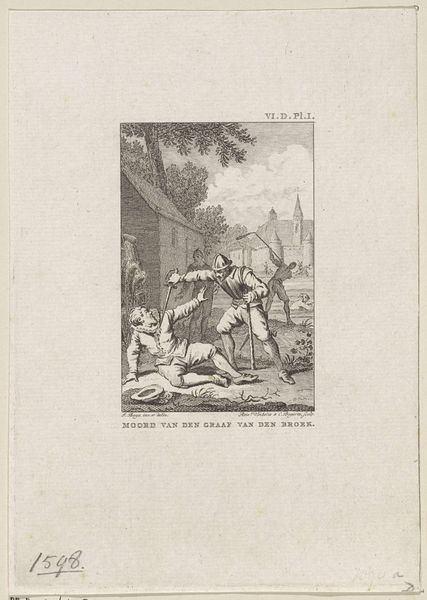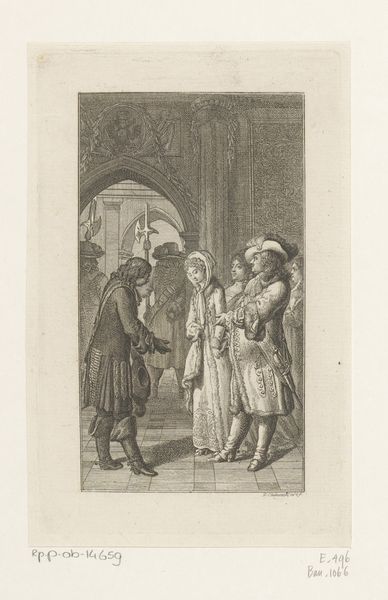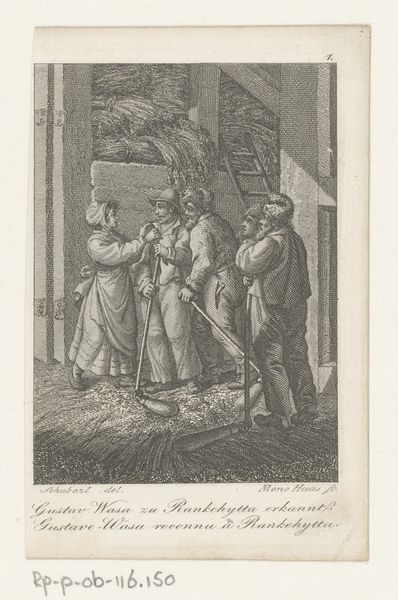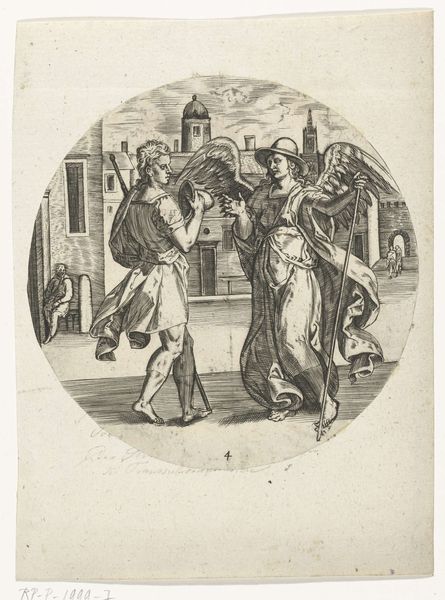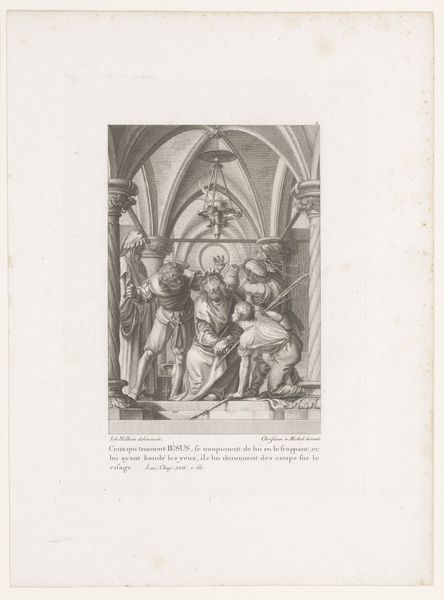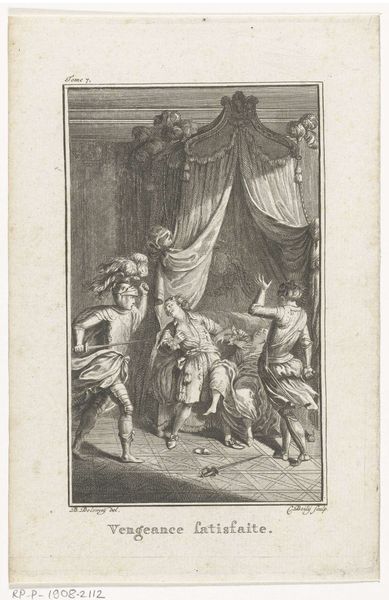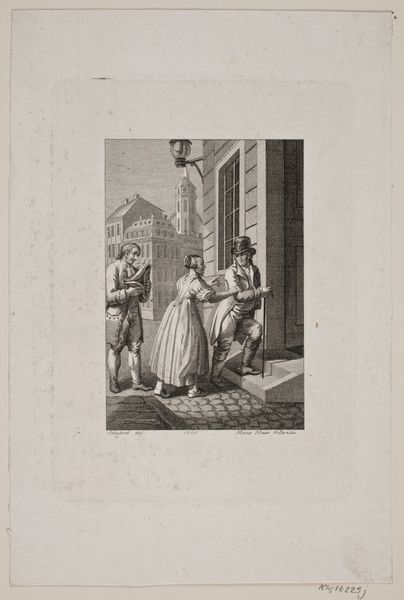
Dimensions: height 160 mm, width 100 mm
Copyright: Rijks Museum: Open Domain
Reinier Vinkeles created this print of the Arrival of Isabella in Haarlem in 1744 using etching and engraving. But why would an eighteenth-century artist depict an event from the fifteenth? In the late 1700s, there was a growing interest in national history and identity throughout Europe, and the Dutch Republic was no exception. Artists turned to the past for subjects that could inspire patriotism and a sense of shared heritage. Isabella of Portugal's arrival in Haarlem for her marriage to Philip the Good, Duke of Burgundy, represented a moment of political and cultural significance for the region. This print, now in the Rijksmuseum, reflects a conscious effort to construct a narrative around Dutch identity through the selective retelling of historical events. Prints like this circulated widely and shaped public perception of the past, fostering a sense of collective memory. Examining such works allows us to understand the complex relationship between art, history, and national identity, and historical resources can help us understand it better.
Comments
No comments
Be the first to comment and join the conversation on the ultimate creative platform.
